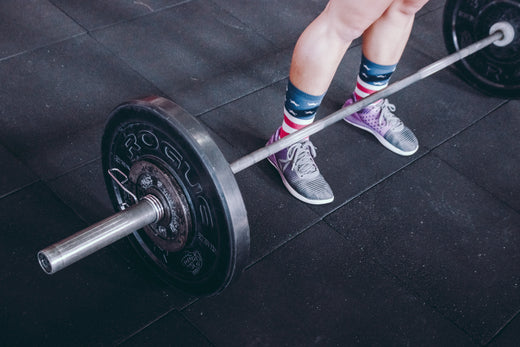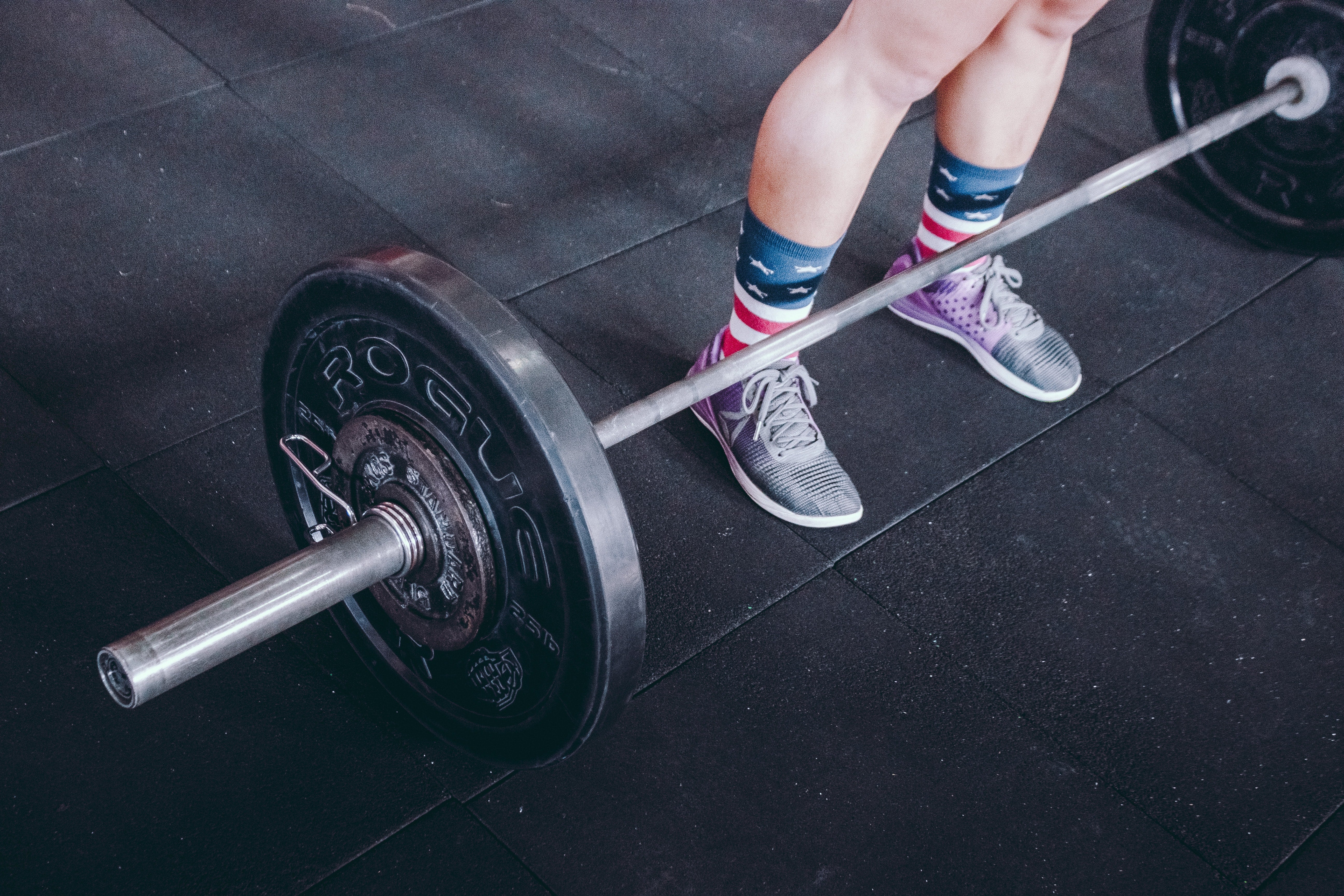Contents (Jump to a section)
Why Are My Calves So Tight? Common Causes of Tight Calves

What are the causes of tight calves? There are more than a few reasons why the calves can become uncomfortable and tight, affecting everyday movements like walking and standing.
To be able to address tight calves, you must first pinpoint the cause. Once you do that, you can begin focusing on relieving tension in the calves with methods such as assisted stretching. In this article, we dive into why your calves may be tight. We also discuss how best to reduce tension in the calves to prevent any repercussions of tight calves, like Achilles tendonitis.
Why Are My Calves So Tight? Examining Some of the Most Common Causes of Tight Calves
Tight calves can result from poor ankle mobility, over-exercising, or a lack of hip mobility. These are only a few of the factors that can cause tight calves. To find out more, keep reading!
Why Are My Calves So Tight When I Run or Hike?
So, why are my calves so tight when I run?
Running itself is a high-impact form of exercise. However, hiking can tax the calves when trekking long distances and steep inclines and declines.
Both of these forms of activity engage the calves, which can result in tightness or tension. If your body is unaccustomed to running or hiking, or if you’ve recently increased intensity, this can cause the muscles in the calves to tighten and become sore.
Are you properly warming up before exercising? Running cold without performing dynamic stretches can cause calves to become tense. Not cooling down post-exercise can cause tightness, too. Stretching should be incorporated pre- and post-workout.
Why Are My Calves So Tight When I Wake Up?
So, why are my calves so tight when I wake up?
The calves can feel tight when waking up because the muscles in the foot and leg end up tightening overnight. It can also result from prolonged periods of sitting, a long day of walking, or a strenuous day of activity.
Knowing how to release tight calves when you wake up can be extremely beneficial in relieving muscle tension. It can also help to stretch out the calves before going to sleep to avoid any possible tightness when waking up.
Why Are My Calves So Tight When I Squat?
There are a few reasons the calves can become tight when squatting. One of them is poor ankle mobility. When there is poor ankle dorsiflexion, it results in other muscles making up for it, the calves. This results in the calves overworking to compensate for the lack of complete range of motion needed while entering a squat.
That’s why it is crucial to increase ankle mobility and work on other mobility issues. The same goes for the hips. Learn how to increase hip mobility to avoid the calves taking on the strain of making up for poor mobility in other parts of the body, like the hips and ankles.
Besides mobility issues, poor form during a squat can also result in tight calves. Therefore, putting time into practicing technique while also addressing mobility concerns can be highly beneficial in preventing tight calves or the risk of injury.
Why Are My Calves So Tight During Pregnancy?
During pregnancy, the body takes on an extra load. Further along in pregnancy, in the third trimester, there is more weight in the front of the body, which causes an unbalance. The calves make up for this, straining to maintain balance, which can result in tightness.
Another reason the calves can become tight during pregnancy changes in blood circulation. The baby can pressure the blood vessels and nerves that go to your legs. Combined with low calcium, this can result in tight calves and cramping in the muscles.
Stretching the legs can help improve circulation problems and relieve tightness from carrying extra weight during pregnancy.
Why Are My Calves So Tight For No Reason?
So, why are my calves so tight for no reason? If you can’t think of any specific reason your calves are tight, it can be tough to figure out where to start.
The calves can become tightened from overuse and underuse. Not moving enough instigates the likelihood of atrophy, or muscle wasting. A lack of exercise can cause this, but it also occurs as you get older. It can also signify a mild injury, such as deep vein thrombosis. Wearing heels can be another cause of tight calves that people often overlook.
Whatever the underlying cause is, it’s important to address it so you can live life without limitations. Here’s why tight calves shouldn’t be overlooked…
Why Tight Calves Need to be Addressed
Addressing tight calves is crucial for avoiding more serious injury risks down the road. When the calves are tight, it can limit the range of motion in the ankles, resulting in an unbalanced shift to the balls of the feet. This can lead to nerve entrapment and bursitis.
Two other issues related to tight calves are achilles tendonitis and plantar fasciitis. As the calf muscles are attached to the foot, the tightness of the calf muscles can cause the muscles to pull on the achilles and foot, resulting in these injuries.
Tight muscles can raise the risk of injury. That’s why it’s important to know how to fix a tight hamstring and tight calves to avoid damage to the body. But how long does it take to get flexible and fix this issue? It can take weeks to notice progress, but consistency and dedication are necessary to achieve the benefits of stretching. And below, we’ll provide some advice to help point you in the right direction.
How to Loosen Up Tight Calf Muscles
There are numerous methods to loosen up tight calf muscles. Assisted stretching and deep tissue massages are both effective. For more information on how these and other methods can help loosen up tight calf muscles, continue reading below!
Assisted Stretching
Assisted stretching is an excellent tool for releasing tightness in the calves and other muscles. The benefits of assisted stretching include enhanced mobility, improved athletic performance, progressed flexibility, decreased stress, and faster recovery.
This form of stretching uses a second person to perform deeper stretches to better target muscle and fascia tightness. It can help you target the fascia using fascial stretch therapy. What is fascial stretch therapy? It targets the joint capsules and fascia that provide support to the body that can become tight and inflamed.
And with CastleFlexx’s flexibility equipment, you can grasp the benefits of assisted stretching without needing the help of another person. This tool can be used anywhere, anytime, to perform active and passive forms of stretching. CastleFlexx’s versatile tool can be used for full-body stretching so that you can target your calves and other parts of your body too!
Deep Tissue Work
Deep tissue work is an effective method of releasing tension and reducing inflammation in the muscles and fascia.
Schedule a deep tissue massage to target the calves and legs. This method relieves tightness in the muscles and fascia, promoting better circulation and blood flow throughout the body. With the help of a deep-tissue massage, any pain or inflammation associated with tightness in the calves or other tense muscles can be greatly relieved.
There are other ways to leverage the benefits of deep tissue work without booking an expensive, inconvenient massage, including lacrosse balls, massage sticks, foam rolling, and the Theragun. These tools are comparatively inexpensive compared to deep tissue massages, and much more convenient, so you can apply deep tissue work to your calves or other tight muscles whenever you may need to.
Exercise
As discussed, underusing the calf muscles can cause them to tighten. If you live a sedentary lifestyle, aim for at least 5,000 steps a day with a goal of 10,000 steps a day, 5-7 days a week, to be considered “active.”
Incorporate resistance training 2-3 days a week at the minimum to encourage muscle gain and retention. Pair an active lifestyle with at least 25-30g of protein per meal to aid in recovery and also help with muscle retention.
As the calves can become tight when placed under an unaccustomed workload or when the intensity of exercise rises, incorporate stretching pre- and post-workout to reduce tightness and soreness in the calves.
Final Thoughts on the Causes of Tight Calves
The causes of tight calves are numerous. Overusing and underusing the calf muscles can cause these essential muscles to tighten. Finding a fine line between the two can be difficult, which is why incorporating stretching before and after exercise is so crucial.
With CastleFlexx’s flexibility equipment, you can benefit from assisted stretching without continually paying money for scheduled sessions or driving to a masseuse or physical therapist. Instead, you can access deep stretching for the muscles and fascia to relieve tension in the calves whenever and wherever you want.
Stretch out tight calves today with CastleFlexx’s assisted stretching flexibility equipment today!
